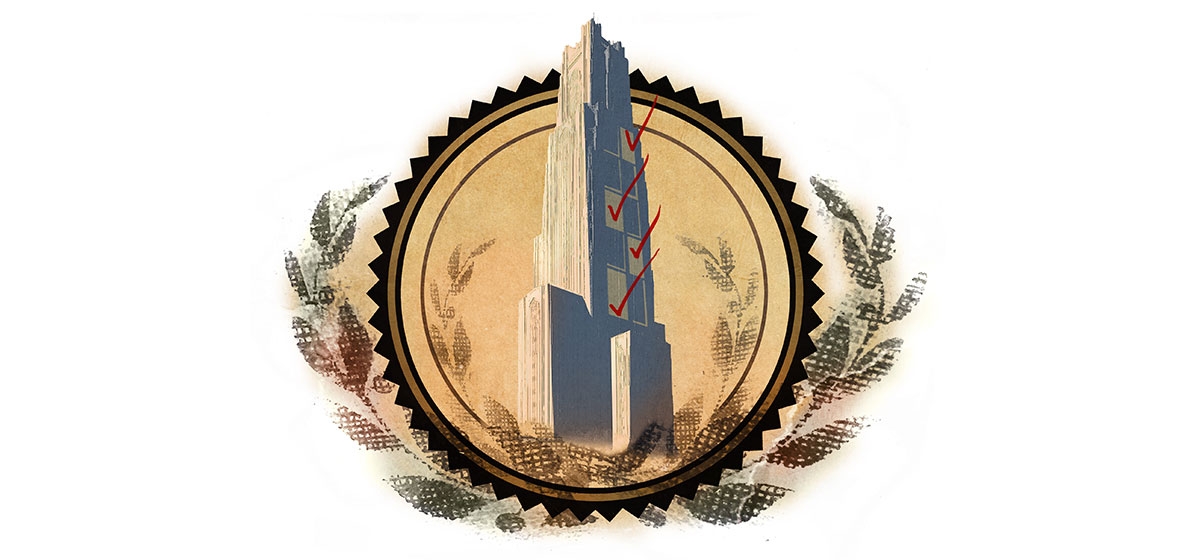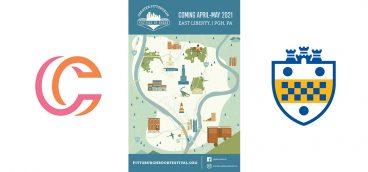Putting Pitt to the Test

At the University of Pittsburgh, 2012 will be remembered. It was a year of celebration—with Pitt’s 225th anniversary being commemorated with reflections on the past and focus on the future. It was a year of ordeal—with a series of bomb threats that threatened the lives and fabric of the Pitt community.
It was also a year of judgment. As luck—or mathematics—would have it, 2012 was the year of the university’s decennial reaccreditation process, an occasion that requires nearly a decade of preparation. This time around, Pitt faced the challenge of presenting itself to a team of evaluators from esteemed universities and colleges, while simultaneously dealing with the bomb threat crisis.
The Middle States Association is one of six regional organizations in the U.S. that provide accreditations to universities. These accreditations are required for public higher learning institutions to receive state and federal funding. In other words, they’re crucial for schools to continue educating students. The process is not a new one for Pitt, and while its leaders presumed the university would earn reaccreditation, a number of strong institutions have struggled with the process—passing with qualifications and needing follow-ups. Passing with flying colors, as Pitt ultimately did, was by no means assured—especially given the circumstances of the accreditors’ visit.
“It was one of those surreal experiences,” said Pitt Provost Patricia E. Beeson. “While we were in the midst of the immediate crisis of the bomb threats, we had very important visits from accreditors and colleagues from other universities. We relocated accreditors three times in two days. In the middle of the meetings, we had to evacuate the building. Everybody just stood up, walked out of the room and down the stairs; we walked to another building to a backup room and continued with the conversation. Ultimately, the bomb threats brought people closer to the institution. Our freshman retention rate is actually higher this year than it was last year.”
While accreditation is a must for receiving public funding, Beeson and her colleagues view it as an opportunity instead of a necessary evil. “There are two values to accreditation,” she said. “The first is meeting the association’s standards, and the second is an opportunity to get feedback on how the university is doing, and how it can improve.” Most important, Beeson said, “was the feedback we received from colleagues at top universities in the region.”
The evaluation team of professors and administrators was chaired by New York University President John Sexton. The team visited the Pitt campus twice, once to examine hundreds of documents to confirm that the university upholds the Middle States Commission on Higher Learning’s standards, and once to assess the efforts Pitt has taken to earn reaccreditation. All institutions seeking reaccreditation must prove that they meet 14 basic standards, but the commission also encourages schools to make the most of this once-in-10-years assessment by pursuing their own internal evaluation projects. The University of Pittsburgh chose to conduct a self-study, which it titled “Using a University-wide Culture of Assessment for Continuous Improvement.”
The study examined the program Pitt has in place to assess its own performance and growth. Rather than relying on a university-wide assessment office, as many institutions do, Pitt has developed an assessment program that allows each school or department to evaluate its own progress, based on the specific values and initiatives it considers most important. The Middle States evaluation report commended Pitt both for the success of this program and for its further efforts at improving it: “There is a genuine and evolving ‘culture of assessment’ at the university, and the willingness to invite careful assessment of that culture by a team of visitors is itself a proof of that proposition.”
Conducting the self-study as part of the Middle States evaluation process not only strengthened Pitt’s case for reaccreditation but also gave the university the benefit of having its assessment program reviewed by a team of outside experts.
The Middle States report provides a summary of observations the evaluation team made during its visits, and highlights the findings the team found particularly significant. One finding focused on the role university leadership has played in Pitt’s dedication to ongoing growth and improvement. The report explains, “The connection between the university’s claim to genuine excellence and the stature of its leadership is deep; and its importance cannot be overstated.”
As provost, Beeson both holds one of the key leadership positions and understands the collective role Pitt leaders have played, especially in the last decade. She pointed first to the Board of Trustees as a crucial, and perhaps overlooked, source of guidance and innovation. “The board has provided very strong leadership since the mid 1990s, when it put out a set of statements of ambitions to pursue excellence in the field of undergraduate education.” The mid-1990s also marked the start of Mark Nordenberg’s term as university chancellor. Echoing the report’s praise of Nordenberg’s service to the university, Beeson called him “a fantastic leader not only for Pitt, but for the city of Pittsburgh and the entire region.”
Although the evaluators applauded the achievements and aspirations of Pitt’s leaders, they also noted that the university’s ability both to maintain its academic programs and to build new ones has been threatened by cutbacks in state funding. In 2001, support from the Commonwealth of Pennsylvania made up 16 percent of Pitt’s annual budget. By 2011, it had fallen below 10 percent. The Middle States report predicts that if this downward trend continues, many of the advancements Pitt has achieved in recent decades—and those it is planning—will be compromised. The evaluators warned that “excellence, once lost, is difficult to regain; excellence at even a great university is fragile and sometimes evaporates quickly; and, in the decades ahead, great cities and states will depend increasingly upon the existence of great universities within them.” Fortunately for Pitt, and for other public Pennsylvania universities facing similar financial constraints, the state recently demonstrated its support of excellence at state universities. Although Governor Tom Corbett proposed further cuts to Pitt’s funding early this year, the state legislature voted against these scale-backs.
It’s difficult to measure what effect, if any, the Middle States report had on the legislature’s decision to maintain Pitt’s current funding levels, but Beeson believes the report’s reiteration of Pitt’s contributions to the state is invaluable. “The message has always been there,” she said, “but it’s good to hear it from other people. It’s important to have people from highly respected institutions throughout the region remind us that having an institution like this in the commonwealth is a real asset to the citizens of Pennsylvania.”
The year 2012 has indeed been a big one for Pitt. But as Beeson said, it’s not just the “big” years that engender reflection and improvement. “Everyone here thinks educating young people, discovery and research make the world a better place. We are committed to the hard work and the good work that we do, and we are committed to making the University of Pittsburgh a better place every single day.”




